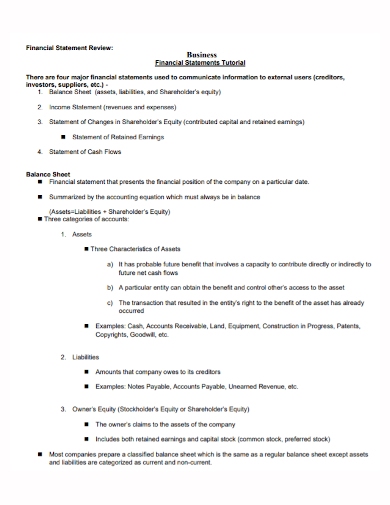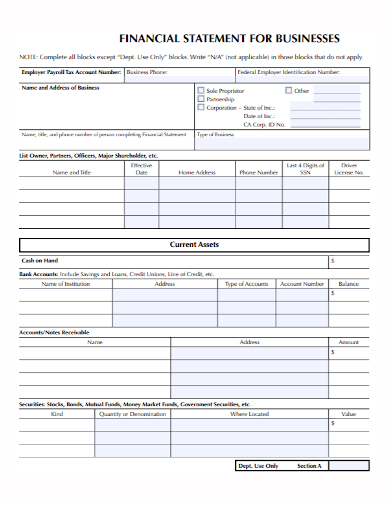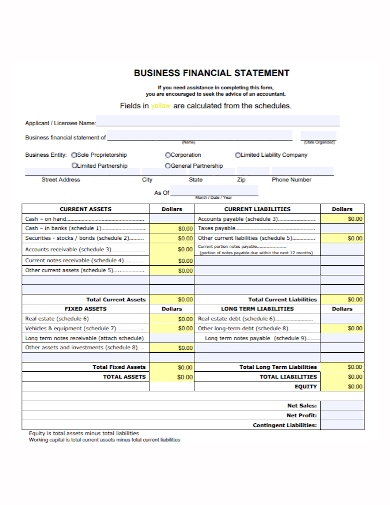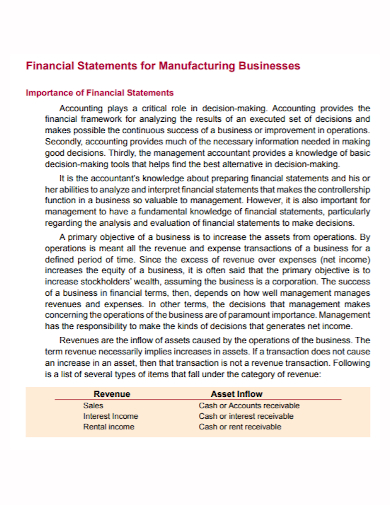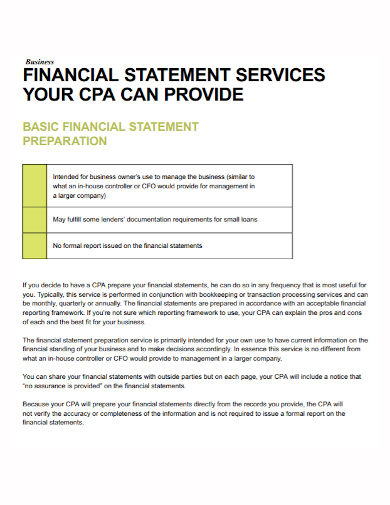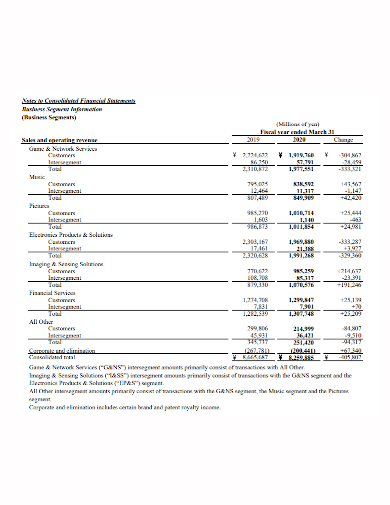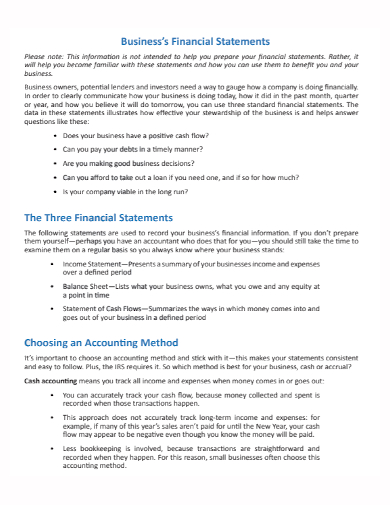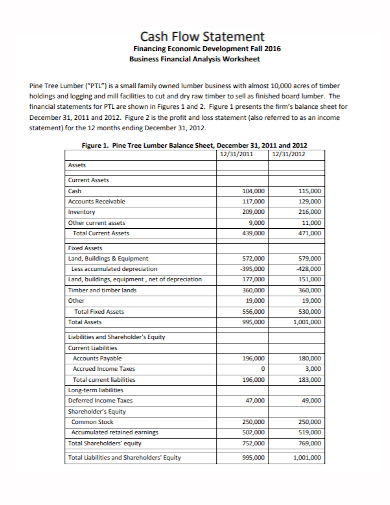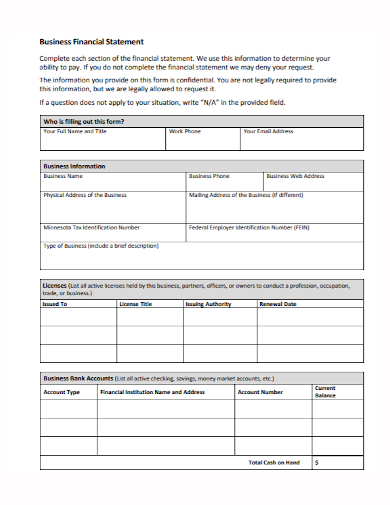10+ Business Financial Statement Samples
Everyone wants financial stability. Whether you are a shareholder, an investor, an employee, or a bank lender, you must provide and record information about a company’s financial situation and changes in financial position. This data is used by decision makers to help organizations prosper economically. You may be wondering, how on earth can I do this? Well, that’s what a financial statement is for. If you want to learn more about this, we’ve got you covered! In this article, we provide you with free and ready-made samples of Business Financial Statements in PDF and DOC format that you could use for your benefit. Keep on reading to find out more!
1. Agency Business Financial Statement
2. Business Financial Review Statement
3. Business Financial Statement
4. Financial Statement for Business
5. Sample Business Financial Statement
6. Manufacturing Business Financial Statement
7. Business Services Financial Statement
8. Consolidated Business Financial Statement
9. Standard Business Financial Statement
10. Business Financial Analysis Statement
11. Basic Business Financial Statement
What Is a Business Financial Statement?
Financial statements are formal records of a company’s, person’s, or other entity’s financial actions and condition. The financial statements’ main aim is to offer information about an organization’s results of operations, financial status, and cash flows. The information in financial statements is used by readers to make decisions about resource allocation. Each of the financial statements has a particular purpose at a more detailed level.
How to Make a Financial Statement
The company benefits from sharing its financial statements with management and outside parties when setting future financial decisions and goals. A Financial Statement Template can help provide you with the framework you need to ensure that you have a well-prepared and robust statement on hand. To do so, you can choose one of our excellent templates listed above. If you want to write it yourself, follow these steps below to guide you:
1. Make a spreadsheet with an asset column and a liability section.
Start by using one of the templates listed above to get a sense of how to go about it. After that, you have the option of listing obligations first, then assets, or assets first, then liabilities. Another section or cell in a spreadsheet will be used to display your calculated net worth.
2. Make a list of your assets and their value.
It’s important to remember that anything isn’t considered an asset unless you own it. It excludes a rented home or flat, as well as other modest and non-highly valued assets. Each asset should be listed in its own cell. Put the item’s monetary value in the cell next to the asset.
3. Make a budget for your company’s expenses.
You must know how much it will cost you to make the sales that you have anticipated. When making your budget, keep in mind your fixed costs (such as rent and salary) as well as your variable costs (such as most advertising and promotional spending).
4. Create a cash-flow statement.
This is a statement that displays how much money is coming in and going out of your company. Your cash flow statement is based in part on sales projections, balance sheet items, and other assumptions. Historical financial statements should be available for existing businesses to help in projecting cash flow. It is critical to understand how you will invoice in order to obtain these forecasts.
FAQ
Which three financial statements are the most important?
Balance sheets, income statements, cash flow statements, and statements of shareholders’ equity are the four financial statements. At a given point in time, balance sheets reflect what a corporation owns and owes.
Financial statements are used by who?
Investors, market analysts, and creditors use financial statements to assess a company’s financial health and profits potential.
What is the purpose of financial statements?
Investors value financial statements because they can reveal a wealth of information about a company’s revenue, expenses, profitability, debt burden, and ability to satisfy short- and long-term financial obligations.
Overall, financial statements are an important component of a business strategy that can assist your company in attracting investors or obtaining bank loans.
Related Posts
Types of Financial Statement
Things You Need to Know about Financial Statements
How Do You Do Financial Statement Analysis?
FREE 17+ Sample Financial Statement
FREE 12+ Retail Income Statement Samples
FREE 10+ Sample Financial Statement Forms
FREE 7+ Sample Business Statement
FREE 35+ Statement Samples
FREE 19+ Financial Statement Samples
FREE 15+ Sample Personal Financial Statement
FREE 15+ Company and Financial Report Samples
FREE 14+ Personal Financial Statement Forms
FREE 12+ Personal Financial Statement Samples
FREE 10+ Non Profit Financial Statements Samples
FREE 10+ Audited Financial Statement Samples


